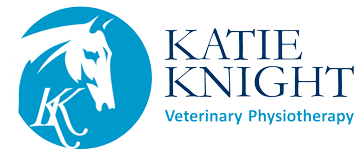How do I know my animal needs physiotherapy?
If your animal has recently suffered an injury or has undergone surgery physiotherapy will help enhance the healing process and advance return to function.
In horses pain will often manifest itself as behavioural issues e.g. bucking, rearing, napping, reluctance to go forwards, reluctance to jump. Pain can also result in a loss of performance such as reluctance to work on the bit, stiffness, inability to flex and bend in one direction, poor canter transitions or becoming disunited in the canter.
In dogs signs of pain or discomfort may show as reluctance to play, go for walks or climb stairs, lameness, stiffness (especially after lying down) or increased time spent sleeping.
How many treatments are needed?
Generally 1 to 3 treatments are needed to resolve the initial complaint; however some cases may require up to 6 treatments.
If the horse / dog is considered to require veterinary attention / further diagnosis then the case will be referred back to your veterinary surgeon before further treatment is given.
For horses regular treatments (every 6 months) are recommended in order to detect any subtle changes to the musculoskeletal system. Detection of sub-clinical issues may be found before they begin to cause pain, this will allow prompt treatment and return to performance. Prevention is always better than cure!
Do we need to get veterinary permission before you can treat my animal?
Yes, Sections 19 and 20 of the Veterinary Surgeons Act 1966 state that a Veterinary Physiotherapist may only treat an animal once veterinary permission has been sought. Permission can be obtained by downloading a referral form for your vet to fill in and emailing it to me before the first appointment.
What does treatment involve and how long will it take?
An initial assessment will be made at the first appointment. This involves taking a case history including information provided by the vet, observing movement, and assessing joint range of motion, muscle symmetry and tone. Following this, areas of dysfunction and weakness will be identified. These areas will then be treated accordingly using appropriate techniques. Any remedial exercises that you will need to carry out following treatment will be demonstrated to you.
Normally the first appointment will last around 90 minutes and subsequent treatments will take around 60 minutes, although this may vary depending on the treatment needed.
Do I need to be there in person whilst you treat my animal?
Yes the owner or person who cares for the animal is required to be present during assessment and treatment. This is to ensure that an accurate case history can be taken and any ‘homework’ exercises can be shown and explained in detail.
Will my insurance company cover the cost of physiotherapy treatment?
Yes, most insurance companies will cover the cost of physiotherapy providing it is recommended by your vet. Contact your insurance provider to be sure.
Will my horse need time off following treatment?
Yes, a few days off work will be required. The amount of time needed depends on the issue being treated.
What do I need to do to prepare my animal before an appointment?
Animals need to be presented clean and dry. A dry and well lit environment will be needed to carry out the treatment.
What if I can’t make an appointment I’ve booked?
Please let me know as soon as possible either by text, email or by calling. Unfortunately if less than 24 hours notice is given a charge will be incurred.
What payment methods do you accept?
Payment is to be made on the day of the appointment. Cash, cheque or BACS is accepted.




